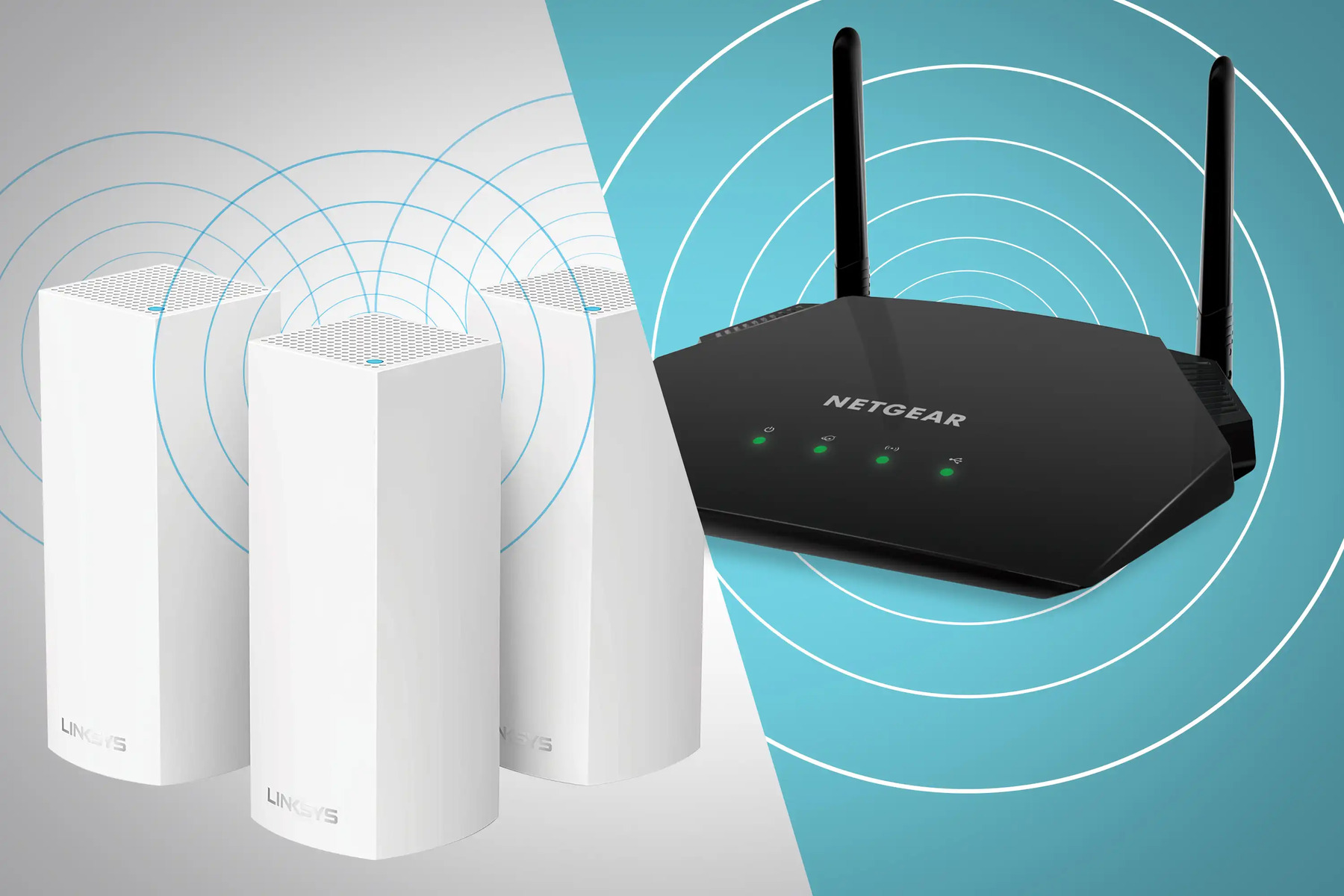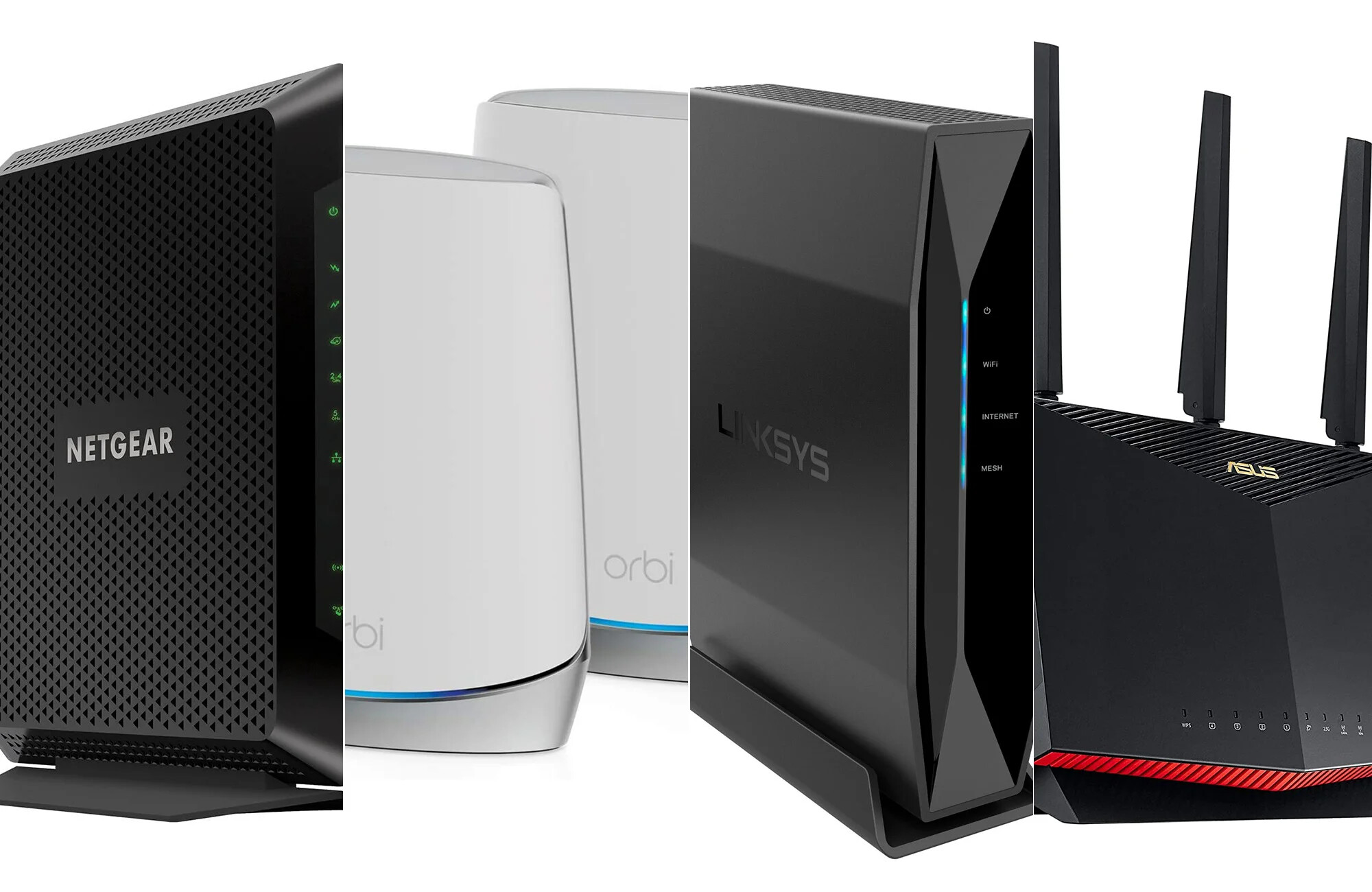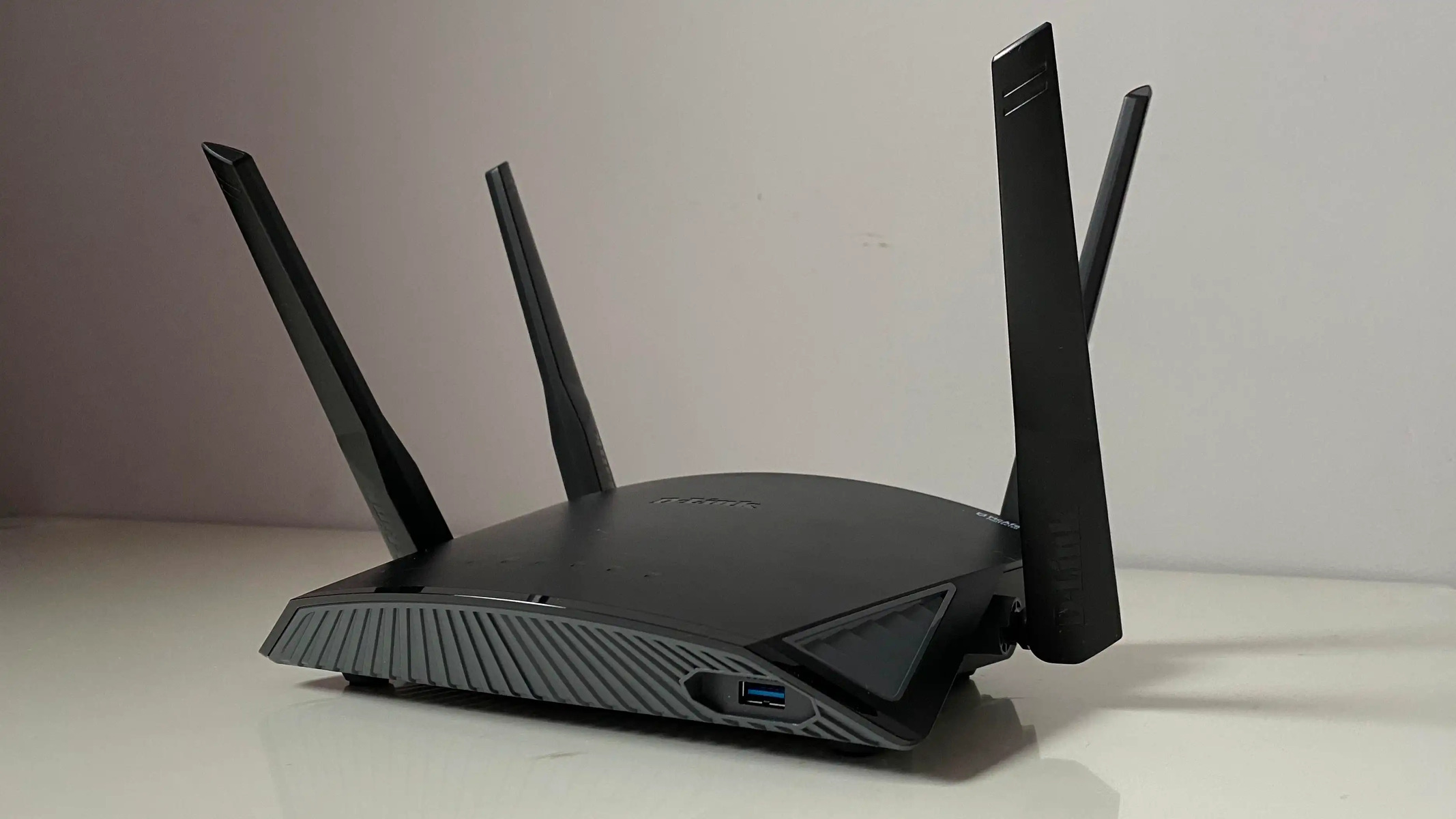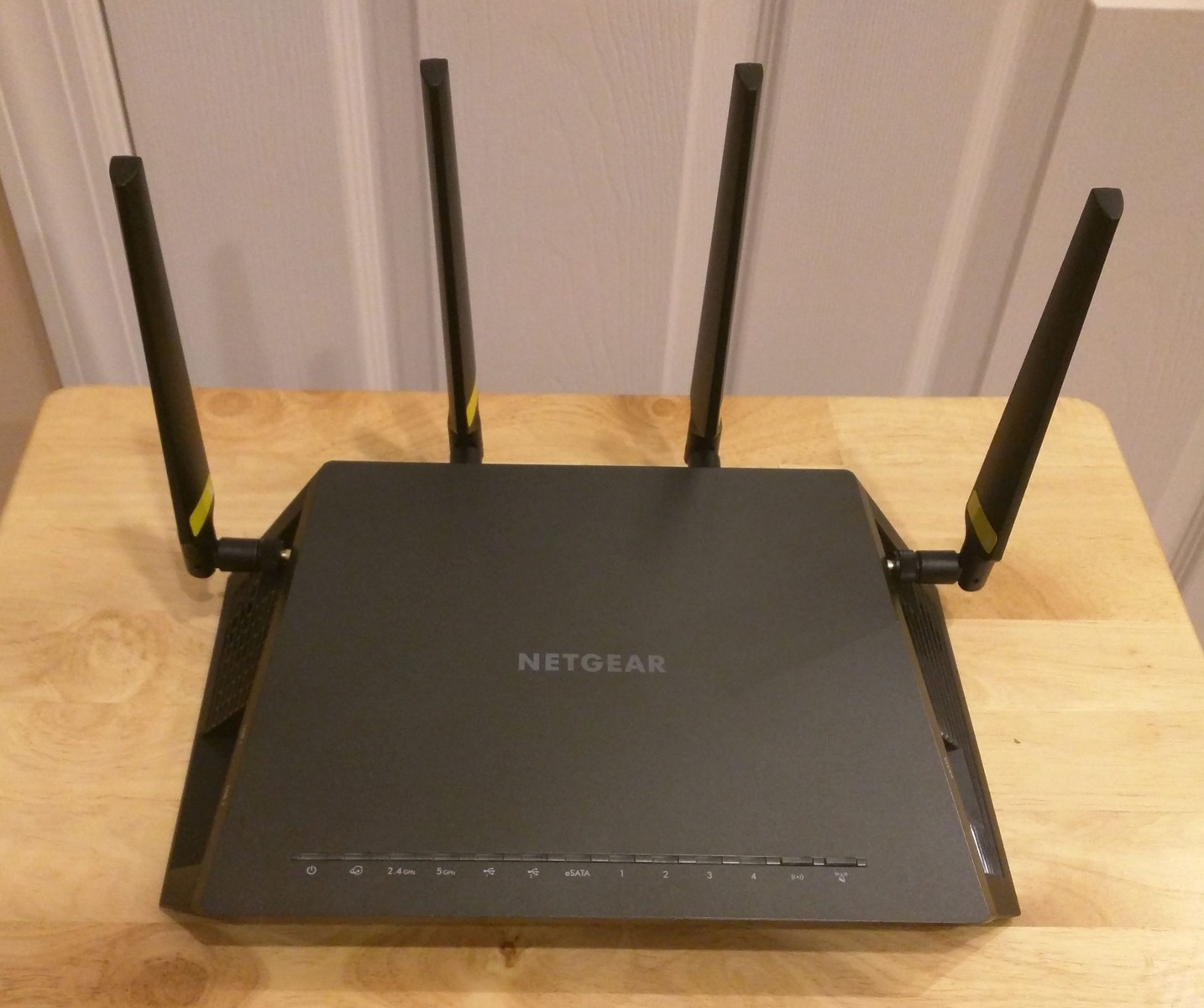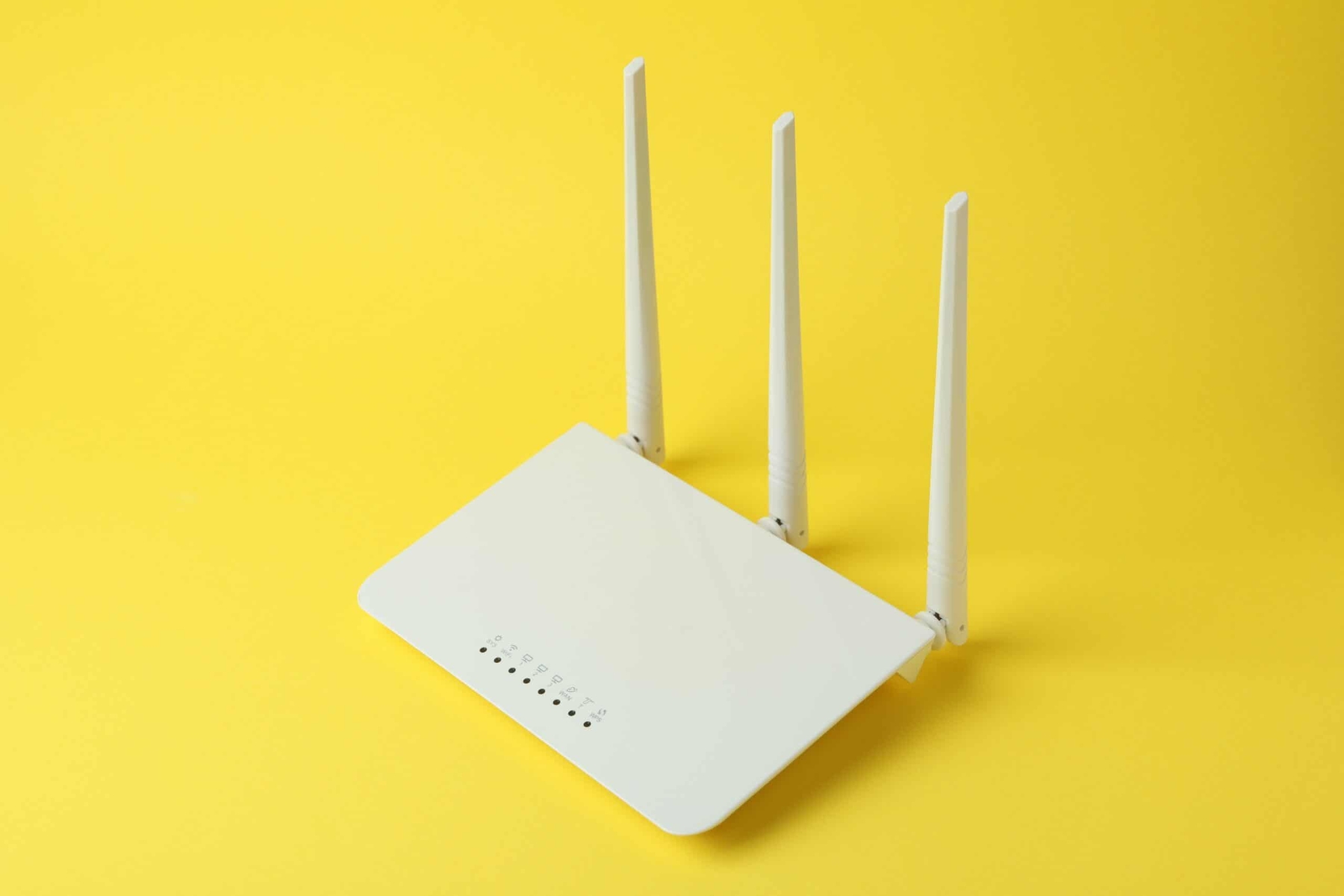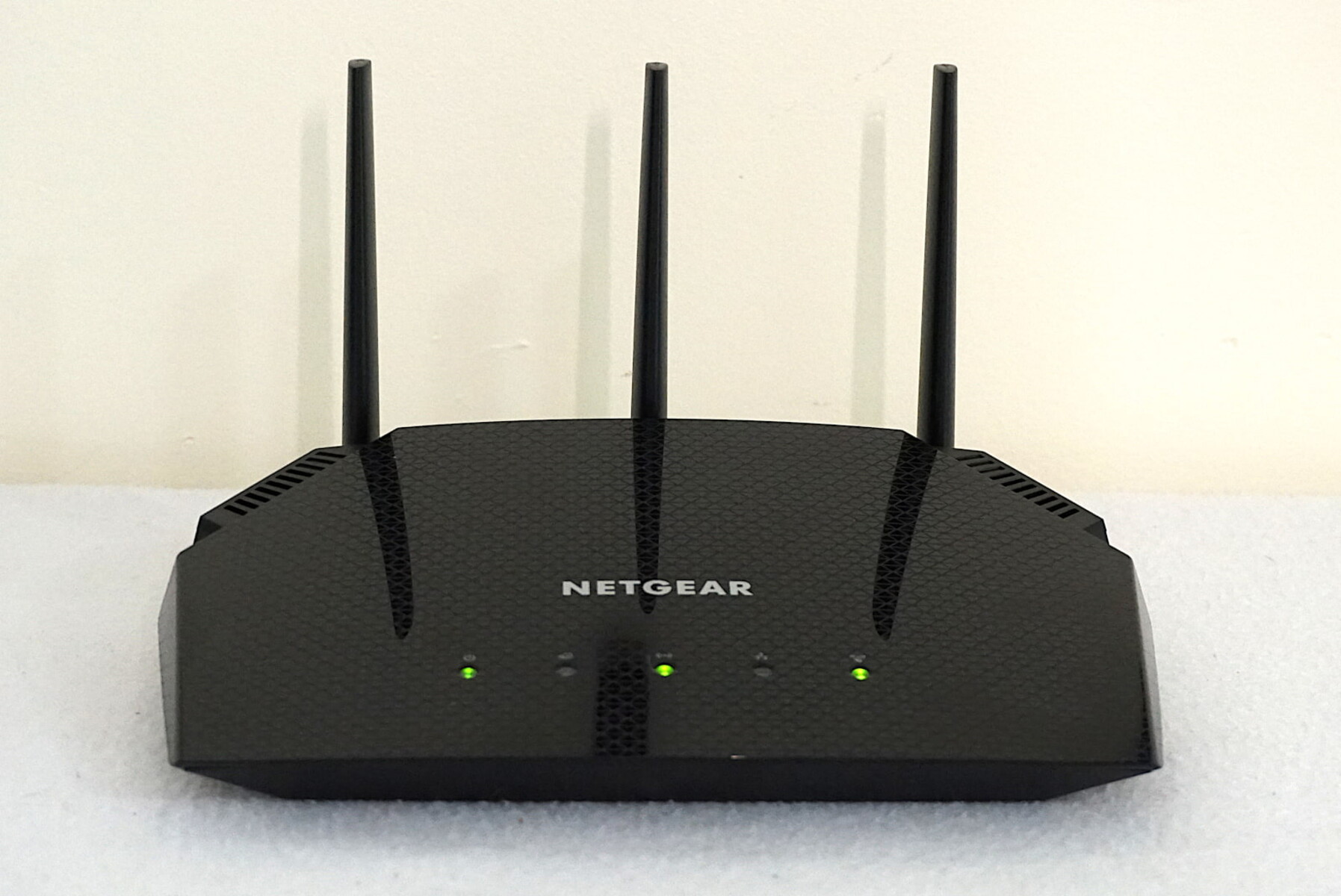Introduction
Welcome to the world of wireless routers! In today’s interconnected world, having a reliable internet connection is essential for both personal and professional use. A wireless router is a device that brings the internet into your home or office and allows multiple devices to connect wirelessly. Whether you’re streaming your favorite movies, browsing the web, or working remotely, a wireless router plays a vital role in keeping you connected.
In this article, we’ll explore the fascinating world of wireless routers, how they work, and the key components that make them function. We’ll also discuss the different types of wireless routers available and factors to consider when choosing the right one for your needs. Additionally, we’ll cover the setup process and offer troubleshooting tips for common issues you may encounter.
It’s important to understand the fundamental aspects of wireless routers to make the most informed decisions for your internet needs. So, let’s dive in and demystify the world of wireless routers!
What Is a Wireless Router?
A wireless router is a networking device that allows multiple devices to connect to the internet wirelessly. It serves as the central hub that enables communication between various devices, such as laptops, smartphones, tablets, and smart home devices, and the internet.
Unlike traditional routers, which require a wired connection, wireless routers utilize radio waves to transmit data between devices and the internet. This wireless technology, known as Wi-Fi (Wireless Fidelity), provides a convenient and flexible way to access the internet without the constraints of physical cables.
Wireless routers perform several crucial functions. Firstly, they act as access points, providing a wireless connection to the internet for devices within the router’s range. Additionally, they serve as a network switch, allowing multiple devices to connect to the same network and share resources, such as printers and network-attached storage.
Furthermore, wireless routers often include built-in security features, such as firewalls and encryption protocols, to protect your network from unauthorized access and ensure the privacy of your data. These security measures help safeguard your personal information from potential threats.
Overall, a wireless router acts as a bridge between your devices and the internet, facilitating seamless communication and enabling you to make the most of your online experience.
How Does a Wireless Router Work?
Understanding how a wireless router works can help demystify its inner workings. At its core, a wireless router operates by following a series of steps to establish a connection between your devices and the internet:
- Receiving the internet signal: The router receives the internet signal from your Internet Service Provider (ISP) through a modem. The modem converts the incoming signal, whether it’s through a DSL, cable, or fiber-optic connection, into a format that the router can understand.
- Creating a local network: The router creates a local network within your home or office, enabling devices to connect to it. This network is often referred to as a Local Area Network (LAN).
- Assigning IP addresses: Each device connecting to the router is assigned a unique IP address, allowing data packets to be properly routed between devices.
- Routing network traffic: When a device sends a request to access the internet, the router receives the request and routes it to the appropriate destination. It performs a process known as Network Address Translation (NAT), which allows multiple devices to share a single IP address provided by the ISP.
- Wireless transmission: The router uses its internal antennas to transmit data wirelessly using radio waves. It uses the Wi-Fi standard to communicate with devices within its range.
- Security and encryption: To protect your network and data, wireless routers often come with security features, such as firewalls and encryption protocols like WPA2 (Wi-Fi Protected Access 2). These measures help prevent unauthorized access and ensure that data transmitted between devices and the router is encrypted.
By following these steps, a wireless router establishes a connection between your devices and the internet, allowing you to browse the web, stream media, and engage in various online activities.
Key Components of a Wireless Router
A wireless router is comprised of several essential components that work together to fulfill its functionality. Understanding these components can help you make an informed decision when choosing a wireless router for your home or office:
- Processor: The processor serves as the brain of the wireless router, handling tasks such as routing network traffic, managing connections, and running the router’s firmware.
- RAM and Storage: Just like a computer, a wireless router relies on random-access memory (RAM) to store temporary data and instructions. Additionally, it may have onboard storage to store firmware updates and configurations.
- Antennas: The antennas on a wireless router transmit and receive wireless signals. They play a crucial role in determining the coverage range and signal strength of the router.
- Ports: Wireless routers typically have Ethernet ports for wired connections. These ports allow you to connect devices directly to the router using Ethernet cables, providing a more stable and secure connection.
- Wireless Standards: Wireless routers support different generations and standards of Wi-Fi, such as 802.11n, 802.11ac, and the latest 802.11ax (Wi-Fi 6). These standards determine the speed, range, and capabilities of the wireless connection.
- Security Features: To protect your network from unauthorized access, wireless routers incorporate security features. These may include firewalls, encryption protocols, and the ability to set up guest networks.
- User Interface: Most wireless routers come with a web-based interface that allows users to configure settings, set up security features, and manage connected devices. Some routers also offer mobile apps for simplified management on smartphones or tablets.
These key components work together to ensure that your wireless router functions optimally, providing a stable and secure network connection for all your devices.
Types of Wireless Routers
Wireless routers come in various types and configurations, each catering to different needs and preferences. Understanding the different types can help you choose the right wireless router for your specific requirements:
- Single-band routers: These routers operate on a single frequency band, usually 2.4 GHz. While they tend to be more affordable, they offer slower speeds and can be prone to interference from other devices, such as cordless phones and microwaves.
- Dual-band routers: Dual-band routers can operate on both the 2.4 GHz and 5 GHz frequency bands simultaneously. This allows for faster speeds and less interference in congested areas where multiple wireless networks are present.
- Tri-band routers: Tri-band routers offer three frequency bands: two on the 5 GHz band and one on the 2.4 GHz band. These routers are ideal for homes or offices with many devices connected simultaneously, as they can provide faster speeds and support multiple high-bandwidth activities.
- Mesh routers: Mesh routers consist of a base unit and one or more satellite units, which work together to create a seamless mesh network. This type of setup ensures consistent coverage throughout a larger space, eliminating dead spots and providing a reliable connection in every corner of your home or office.
- Gaming routers: Gaming routers are specifically designed to optimize online gaming performance. They prioritize gaming traffic, reduce latency, and offer advanced features like Quality of Service (QoS) settings to ensure a smooth gaming experience.
- VPN routers: VPN (Virtual Private Network) routers come with built-in VPN support, allowing you to create secure connections to remote networks or to enhance your privacy and security when browsing the internet.
- Wi-Fi 6 routers: Wi-Fi 6, also known as 802.11ax, is the latest Wi-Fi standard that offers faster speeds, improved performance in crowded areas, and better support for multiple devices. Wi-Fi 6 routers are backward compatible with older devices but provide optimized connectivity for Wi-Fi 6 capable devices.
When choosing a wireless router, consider the specific needs of your home or office environment and the number of devices you plan to connect. Evaluating these factors will help you select the most suitable type of wireless router to meet your requirements.
Factors to Consider When Choosing a Wireless Router
Choosing the right wireless router for your needs can greatly impact your internet experience. Here are some important factors to consider before making a purchase:
- Speed and Performance: Look for routers that support the latest Wi-Fi standards, such as 802.11ac or Wi-Fi 6, for faster speeds and better performance. Consider the maximum data transfer rates and the number of devices the router can handle simultaneously.
- Coverage Range: Assess the coverage range that a wireless router can provide. Pay attention to the number and strength of antennas, as well as the router’s power output, to ensure coverage in all areas of your home or office.
- Security Features: Protecting your network and personal data is crucial. Look for routers that offer robust security features such as firewalls, encryption protocols, and guest network capabilities. Also, ensure that the router supports firmware updates to address any security vulnerabilities.
- Number and Type of Ports: Determine how many Ethernet ports you need for wired connections. Consider if you require additional features like USB ports for sharing printers or storage devices over the network.
- Ease of Use: Consider the user interface and ease of setup. Look for routers that provide intuitive web-based interfaces or mobile apps for effortless configuration and management.
- Budget: Determine your budget for a wireless router and find a model that offers the best balance between features, performance, and cost.
- Brand Reputation: Research different brands and read customer reviews to get a sense of the reliability and customer support provided by the manufacturer.
- Future-Proofing: Consider investing in a router that supports the latest Wi-Fi standards and technologies to ensure compatibility with future devices and advancements in the wireless industry.
By carefully evaluating these factors, you can select a wireless router that meets your specific requirements, delivers reliable performance, and keeps your network secure.
Setting Up a Wireless Router
Setting up a wireless router may seem like a daunting task, but with a step-by-step approach, it can be a straightforward process. Here are the general steps to get your wireless router up and running:
- Choose a Central Location: Place your router in a centralized location within your home or office to ensure optimal coverage. Avoid placing it near thick walls or obstructions that can hinder the wireless signal.
- Connect to Power: Plug your router into a power outlet and turn it on. Ensure that the power indicator lights up, indicating that the router is receiving power.
- Connect to Your Modem: Use an Ethernet cable to connect your router to the modem provided by your Internet Service Provider (ISP). This connection allows the router to receive the internet signal.
- Access the Router’s Configuration Page: Open a web browser on a connected device and enter the default IP address of the router (often found in the router’s manual). This will take you to the router’s configuration page.
- Create an Admin Password: Change the default login credentials to secure your router. Create a strong password that is unique and not easily guessable.
- Configure Wireless Settings: Set the SSID (network name) and choose a strong, unique network password (WPA2 is recommended) to protect your wireless network from unauthorized access.
- Enable Guest Network (Optional): If your router supports guest networks, configure the settings to allow visitors to connect to a separate, secure network without accessing your main network.
- Test the Connection: Once all the settings are configured, disconnect from the router’s configuration page and test the wireless connection on your devices. Connect your devices to the newly created network using the SSID and password you set.
- Update Firmware: Check for firmware updates for your router on the manufacturer’s website and install them. Firmware updates often include bug fixes, security enhancements, and performance optimizations.
- Secure Your Network: Regularly review and update your router’s security settings, including firmware updates, to keep your network safe from potential threats.
Remember, these steps are a general guideline, and the specific setup process may vary depending on your router’s brand and model. Consult your router’s manual or the manufacturer’s website for detailed instructions tailored to your specific router.
Troubleshooting Common Issues with Wireless Routers
While wireless routers are designed to provide a seamless internet experience, occasional issues may arise. Here are some common problems you may encounter with wireless routers and troubleshooting steps to resolve them:
- Slow or Intermittent Internet Connection: If your internet connection is slow or frequently disconnects, try restarting your router and modem. If the issue persists, check for firmware updates for your router and consider adjusting the positioning of your router for better signal strength.
- Weak Wi-Fi Signal: If you experience weak Wi-Fi coverage in certain areas, try repositioning your router to a more central location or consider using Wi-Fi range extenders or mesh systems to improve coverage throughout your home or office.
- Forgotten Wi-Fi Password: If you forget your Wi-Fi password, access your router’s configuration page and navigate to the Wireless Settings section. Locate the wireless password field and update it with a new password. Be sure to save the changes and reconnect your devices using the new password.
- Device Connectivity Issues: If a specific device is having trouble connecting to your wireless network, try restarting the device and ensuring that you’ve entered the correct SSID and password. If the problem persists, check if the device’s Wi-Fi adapter or drivers need to be updated.
- Interference from Other Devices: Other electronic devices, such as cordless phones or microwave ovens, can interfere with your Wi-Fi signal. Relocate your router away from these devices or switch to a different Wi-Fi channel to minimize interference.
- Router Not Powering On: If your router is not turning on, check the power source and ensure that the power cable is securely connected. Try plugging the router into a different power outlet or using a different power cable if available.
- Resetting the Router: If all else fails, you may need to reset your router to its default settings. Use a paperclip or pin to press and hold the reset button on the router for about 10 seconds. This will erase any customized settings, so be prepared to reconfigure your network.
- No Internet Connection: If you are unable to access the internet even when connected to your wireless network, first check if your ISP is experiencing any outages. You can also try power cycling your router and modem, or contacting your ISP for further assistance.
Remember to consult your router’s manual and manufacturer’s website for specific troubleshooting guidance for your particular model. Be patient and methodical in troubleshooting, and seek technical support if necessary.
Best Practices for Using a Wireless Router
To optimize the performance and security of your wireless router, it’s important to follow best practices for its usage. Here are some key tips to keep in mind:
- Secure Your Network: Change the default login credentials of your router to protect it from unauthorized access. Also, enable encryption (WPA2 or higher) on your wireless network and choose a strong, unique password to prevent unauthorized users from connecting.
- Keep Firmware Updated: Regularly check for firmware updates on the manufacturer’s website and install them. Firmware updates often contain bug fixes, performance improvements, and security patches, ensuring your router operates at its best.
- Position Your Router Correctly: Place your router in a central location, away from obstructions and electronic devices that may interfere with the signal. Position the antennas vertically for better coverage and consider using Wi-Fi repeaters or mesh systems if you have a large area to cover.
- Use Strong Passwords: Set strong and unique passwords not only for your Wi-Fi network but also for the router’s configuration interface. Avoid using common passwords or dictionary words to enhance the security of your network.
- Regularly Review Connected Devices: Periodically review the list of devices connected to your router. Remove any unknown or unauthorized devices to maintain control over your network.
- Enable Guest Network: If your router supports a guest network, use it for visitors instead of sharing your main network’s credentials. This helps isolate their devices from your network and protects your sensitive data.
- Manage Bandwidth Usage: When multiple devices are connected, managing bandwidth is essential. Set up Quality of Service (QoS) settings to prioritize certain devices or applications to ensure a smooth and uninterrupted internet experience.
- Regularly Restart Your Router: Restarting your router periodically can help refresh the connection and clear any temporary glitches. Consider scheduling automatic restarts during low-usage periods to ensure optimal performance.
- Protect Against Malware: Install and regularly update antivirus and anti-malware software on devices connected to your network. This helps prevent malware from infecting your network through vulnerable devices.
- Monitor Your Network: Utilize your router’s built-in monitoring tools or third-party apps to keep track of network activity. Monitor device connections and data usage to identify any suspicious or excessive usage.
By following these best practices, you can enhance the security, stability, and performance of your wireless network, ensuring a seamless internet experience for all connected devices.
Conclusion
Wireless routers play a crucial role in keeping us connected in today’s digital age. They provide the convenience and flexibility of accessing the internet wirelessly, allowing us to connect multiple devices and enjoy seamless online experiences. Understanding the fundamentals of wireless routers, including their functionality, key components, and the various types available, is essential for making informed decisions when choosing the right router for our needs.
Setting up a wireless router can be a straightforward process by following basic steps such as connecting to power, configuring wireless settings, and securing your network. Troubleshooting common issues that may arise, such as slow internet speeds or device connectivity problems, can also be managed with some practical tips and troubleshooting techniques.
To get the most out of your wireless router, it’s important to follow best practices such as securing your network with strong passwords, keeping the firmware updated, optimizing the position of your router for better coverage, and monitoring your network for any potential issues. These practices will help ensure a secure, stable, and efficient wireless network for all your internet needs.
With the advancements in technology and the increasing demand for seamless connectivity, wireless routers continue to evolve and offer enhanced features and capabilities. It’s important to stay informed about the latest developments in wireless router technology, such as Wi-Fi 6 and mesh networking, to make informed decisions and future-proof your network.
By understanding the fundamentals, following best practices, and staying up to date with the latest advancements, you can make the most of your wireless router and enjoy reliable and fast internet connectivity in your home or office.







